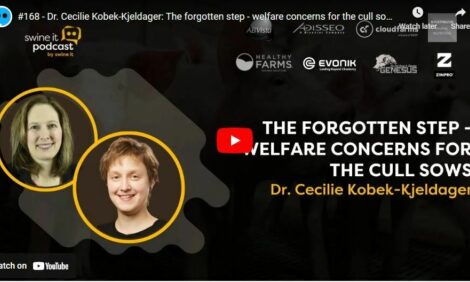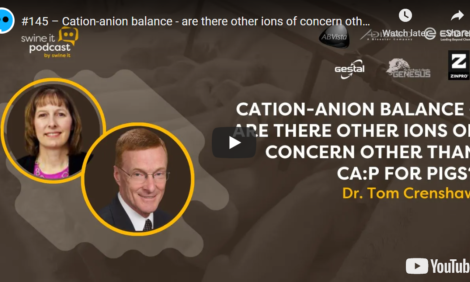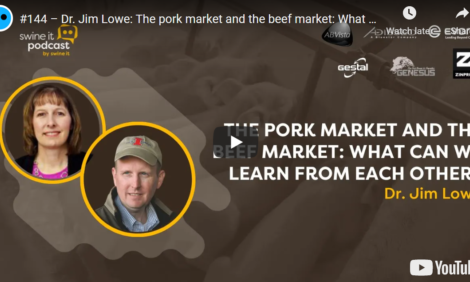



Swine it #115: Implementing technology and maximizing sow productivity - Dr. Ken Stalder
Part of Series:
As research continues to develop new ways to improve the swine industry, our farms have to find ways to feasibly implement these new developments. Some new technologies look good on paper, but are not feasible due to the cost of the extra labor. In today’s talk, Dr. Ken Stalder discusses different ways of defining sow productivity, the necessary training required to implement new technologies, and how to identify which technologies will be the most beneficial to implement on the farm.
"𝘕𝘦𝘸 𝘢𝘨𝘳𝘪𝘤𝘶𝘭𝘵𝘶𝘳𝘢𝘭 𝘵𝘦𝘤𝘩𝘯𝘰𝘭𝘰𝘨𝘪𝘦𝘴 𝘴𝘩𝘰𝘶𝘭𝘥 𝘣𝘦 𝘥𝘦𝘷𝘦𝘭𝘰𝘱𝘦𝘥 𝘧𝘳𝘰𝘮 𝘵𝘩𝘦 𝘨𝘳𝘰𝘶𝘯𝘥 𝘶𝘱 𝘳𝘢𝘵𝘩𝘦𝘳 𝘵𝘩𝘢𝘯 𝘧𝘳𝘰𝘮 𝘵𝘩𝘦 𝘵𝘰𝘱 𝘥𝘰𝘸𝘯, 𝘢𝘯𝘥 𝘵𝘩𝘢𝘵 𝘸𝘢𝘺 𝘸𝘦 𝘥𝘰 𝘢 𝘣𝘦𝘵𝘵𝘦𝘳 𝘫𝘰𝘣 𝘥𝘦𝘷𝘦𝘭𝘰𝘱𝘪𝘯𝘨 𝘵𝘩𝘦 𝘵𝘰𝘰𝘭𝘴 𝘵𝘩𝘦 𝘧𝘢𝘳𝘮 𝘢𝘤𝘵𝘶𝘢𝘭𝘭𝘺 𝘩𝘢𝘴 𝘢 𝘯𝘦𝘦𝘥 𝘧𝘰𝘳." - 𝗗𝗿. 𝗞𝗲𝗻 𝗦𝘁𝗮𝗹𝗱𝗲𝗿
𝗪𝗵𝗮𝘁 𝘆𝗼𝘂 𝘄𝗶𝗹𝗹 𝗹𝗲𝗮𝗿𝗻:
1. Defining sow productivity
2. How to size multiplication correctly
3. Tips about the economics
4. Gilt selection
5. Following offspring
6. Balance between technology and labor
7. What’s important and what’s not
8. Balancing technology skills and husbandry skills
9. Training people
10. Key points
𝗠𝗲𝗲𝘁 𝘁𝗵𝗲 𝗴𝘂𝗲𝘀𝘁: Dr. Ken Stalder is a swine genetics professor at Iowa State University. He earned his B.S from Iowa State University before attending Western Kentucky University to acquire his M.S. He then returned to Iowa State University in 1995 to earn his Ph.D. in animal breeding and genetics. Immediately after receiving his Ph.D., Ken started as an assistant professor at the University of Tennessee until 2003 when he accepted a position as a professor at his alma mater, specializing in swine genetics and extension. Ken’s work has led to an increased focus on sow longevity within the swine industry. With the help of his colleagues, Dr. Stalder developed spreadsheets to determine how long a sow has to remain in the breeding herd to “pay for herself” and he developed posters highlighting ideal traits for replacement gilts. These tools are widely used across the globe today. Dr. Stalder has published over 500 articles (including over 145 journal articles). Ken has mentored 18 graduate students (13 M.S., 5 Ph.D.) and served on the committee for 45 others (34 M.S., 11 Ph.D.).














